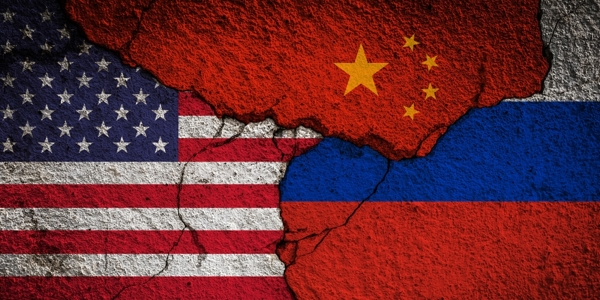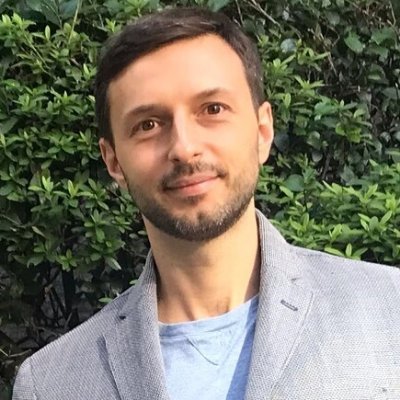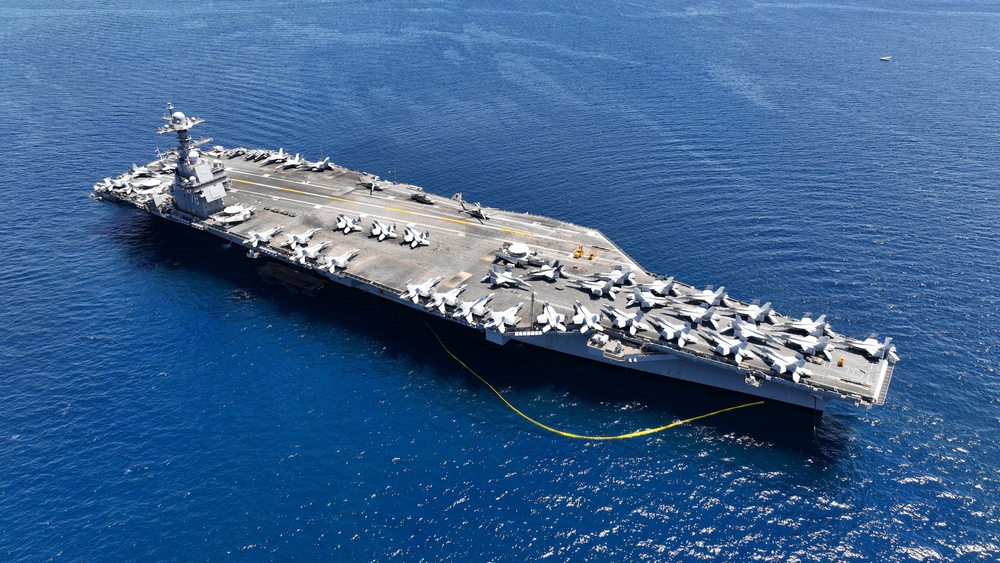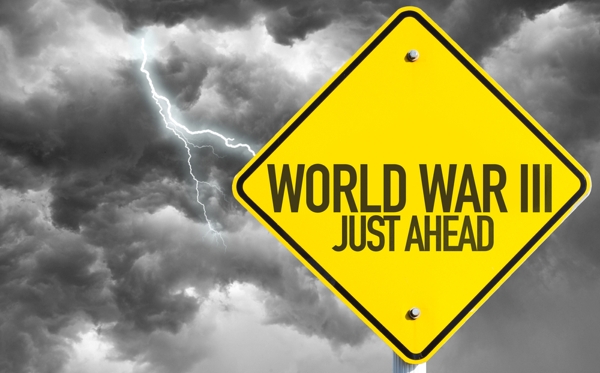Russia, China, and Iran are the primary geopolitical challengers to the US-led world order.
While they resent US dominance, Russia and China have a seat at the table in the current US-led world order as junior members. They have permanent seats at the UN Security Council and are members of core international organizations like the IMF, the World Bank, the WTO, etc.
Further, China and Russia are the only countries with sophisticated enough nuclear arsenals to go toe-to-toe with the US up to the top of the military escalation ladder, a concept to describe how the severity of a military conflict can increase.
In other words, the US military can’t attack Russia and China with impunity because they can match each move up to all-out nuclear war—the very top of the military escalation ladder.
For this reason, Russia, China, and the US are deterred from entering a direct military conflict with each other. They all understand that “The only winning move is not to play.”
That’s also why, at this point, it doesn’t seem that Russia and China want to flip the board and create their own new world order—as Germany and Japan tried to do during World War 2. Doing so could invite nuclear Armageddon.
Instead, Russia, China, and their allies want to transform the current world order from unipolar to multipolar and give themselves a bigger seat at the table in the process.
The US and its allies want the unipolar status quo to prevail.
The conflict is being played out below the threshold of direct kinetic warfare—proxy wars, economic wars, financial wars, cyber wars, biological wars, deniable sabotage, information wars, and other domains.
This is World War 3. It’s happening right now and rapidly escalating.
In fact, World War 3 has been going on for over ten years.
While World War 3 doesn’t have a precise starting date, we can point to two key events in 2013 and 2014 that signified a conflict had started among Russia, China, and the US—the largest world powers—to reshape the world order.
The first was the rise to power of Xi Jinping in March 2013, after which it was clear that China was no longer content with being a mere junior member in the US-led world order. Beijing wanted a bigger role commensurate with its size. That means, at a minimum, being equal to the US or even becoming the world’s dominant power.
The second was the US-backed coup in Kiev in February 2014, which culminated in the violent overthrow of Ukraine’s corrupt pro-Russia government, which a corrupt pro-US government replaced.
Ukraine is Russia’s most important neighbor. Slavic countries, like Russia, trace their cultural heritage to the Kievan Rus’—a federation of tribes based in Ukraine from the late 800s through the early 1240s.
Ukraine is also a strategic jewel. US strategists have long fantasized about absorbing the country into NATO. It would go a long way toward neutering Russia’s military might and isolating Moscow.
After the 2014 coup in Ukraine, Moscow became convinced that the US was unalterably intent on subordinating Russia under its control. Russia believed it had no choice but to push back, primarily by joining forces with China and others to transform the US-led world order into a multipolar one.
In my view, those two events signaled the start of a conflict between the biggest powers to reshape the world order—World War 3. It has only escalated since and could soon reach a tipping point that changes everything.
The Geopolitical Chessboard
As I see it, World War 3 is a conflict between two geopolitical blocks.
The first block consists of the US and its allies (or vassals) who have hitched their wagons to the unipolar world order.
I’m reluctant to call this block “the West” because the people who control it have values antithetical to Western Civilization.
A more fitting label would be NATO & Friends.
The other block comprises Russia, China, Iran, and other countries favorable to a multipolar world order.
Let’s call them the BRICS+, which stands for Brazil, Russia, India, China, South Africa, and other interested countries.
BRICS+ is not a perfect label, but it’s a decent representation of the countries favorable to the multipolar world order.
Some countries don’t fall decisively into one category. For example, Saudi Arabia is a major US ally and a member of the BRICS+. I’ve put these countries in a separate Non-Aligned category. They are prime arenas of competition for NATO & Friends and BRICS+.
Below is an approximate map of the geopolitical chessboard as I see it. Click the image to enlarge.
 In my following articles, I’ll look at the seven domains World War 3 is playing out on and analyze which side has an advantage.
In my following articles, I’ll look at the seven domains World War 3 is playing out on and analyze which side has an advantage.
Then, I’ll put it all together to see where it is all going and discuss investment implications.
Editor’s Note: Did you know there’s an excellent chance a historical crisis is coming soon?
Fortunately, it doesn’t have to blindside you, your family, or your portfolio.
Quite the contrary.
That’s exactly why I just released an urgent new report with all the details, including what you must do to prepare.







